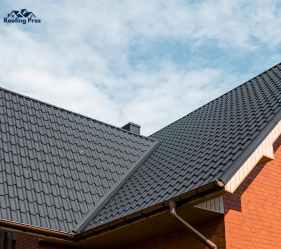How to Install PVC Roofing
PVC roofing installation is reliable and long-lasting for both residential and commercial buildings undergoing new construction and renovation because of its added insulation capabilities and weather resistance. A durable roofing system is achieved with some simple effort by following the necessary procedures.
- Roof Surface Preparation:
Before installation begins, the roof surface is inspected for damage and all old materials, if any, are removed, followed by cleaning. Any loose materials, dirt, and debris should be removed to create a stable foundation, and rotting weak spots must be fixed.
After, insulation boards for better thermal insulation are placed. This step ensures that the surface is uniformly level for the next steps. This roofing installation guide ensures helps avoid issues during long-term use, and prevents structural failure while achieving a strong, leak-proof roofing system.
- Positioning and Securing the Membrane:
Membrane positioning is one of the most crucial elements for how to install PVC roofing, as a membrane should be carefully placed on the prepared surface to ensure control of all edges and corners. It is recommended that the membrane is unrolled systematically, with edges overlapping slightly creating a watertight seal. Mechanical fasteners and adhesives can also be used depending on the methods.
Secure placement of the material guarantees proper installation, protecting against bad weather while preventing shifting. Any misalignment should be corrected right away if weak points or leaks are to be avoided.
- Weld the Seams to ensure a Watertight Seal:
The next step in PVC roofing system installation involves hot air welding tools to enable the joining of components to achieve heated seams. Moisture permeation is avoided as the overlapping parts are strongly bonded and these processes allow for robust, waterproof attachment.
While achieving a weld, adequate amounts of heat and pressure should be applied consistently to close gaps completely. All gaps should be covered to allow thorough examination after welding. Pieces of material showing signs of weakness will need additional coverage, identifying weak areas that need reinforcement. Strong overall durability and weather resistance are obtained with well-executed seam welding.
- Install Flashing and Reinforce Edges:
Vents, skylights, and chimney tops are protected from water by ensuring properly sealed flashing. To protect the membrane against wind uplift, bars for termination and edges for dripping are placed around the roof's borders. These outlines allow the roof to be adequately supported, enabling seamless performance for a prolonged period and stability against wind forces.
- Final Inspection and Maintenance:
After completing the installation, a thorough inspection should be conducted to find if there are any hidden or weak spots. To find leaks during the process, a water test is beneficial. The roof's surface shall be at its best by removing any leftover debris or adhesives. Regular upkeep, such as small repairs and checks, makes sure the roof can function properly and effectively for years.
A well-installed PVC roofing provides excellent weather protection, enhanced energy efficiency, and cost savings. Property owners can increase the lifetime and efficiency of the roofing system, which will make the property a wise investment, by following routine maintenance and the correct procedures.

